Backlinks are links to your website from other websites. And backlinks from reputable and relevant sites can boost your search engine rankings.
In this post, you’ll learn how to get backlinks that drive results.
Let’s dive in.
1. Ask Creators to Fix Your Broken Backlinks
One of the easiest and most effective ways to get backlinks is to find broken backlinks to your site (e.g., backlinks to your deleted pages). And ask the creators to fix them.
They’re likely to accept your request. Because no one wants broken links on their website. And they intended to link to you in the first place.
You can find your broken backlinks with Semrush’s Backlink Audit tool.
After setting up, go to the “Target Pages” report and check the box beside “Target URL error.”
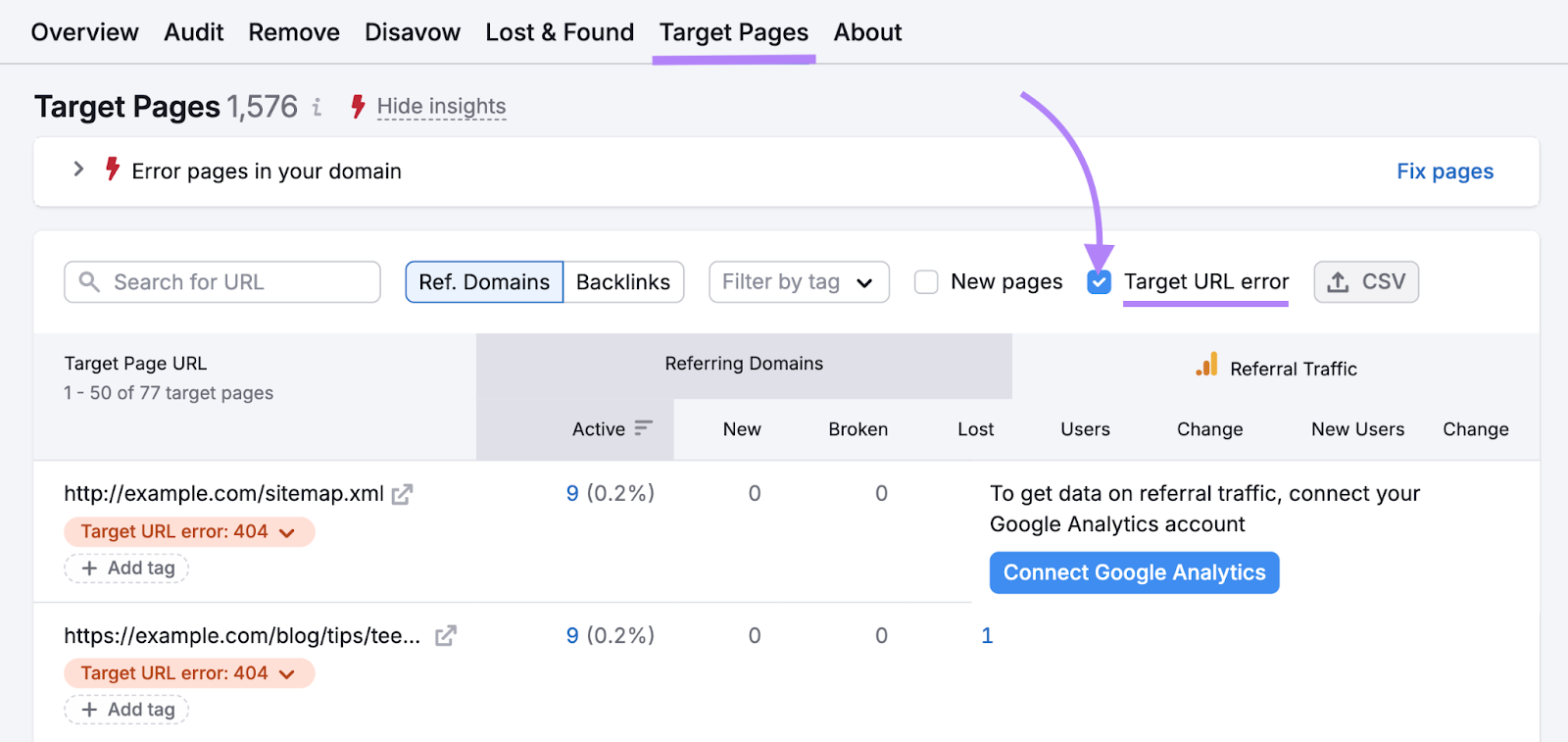
You’ll see a list of broken URLs on your domain.
Find a URL that you have a good replacement for. Then click the number in the “Active” column to view its active backlinks.
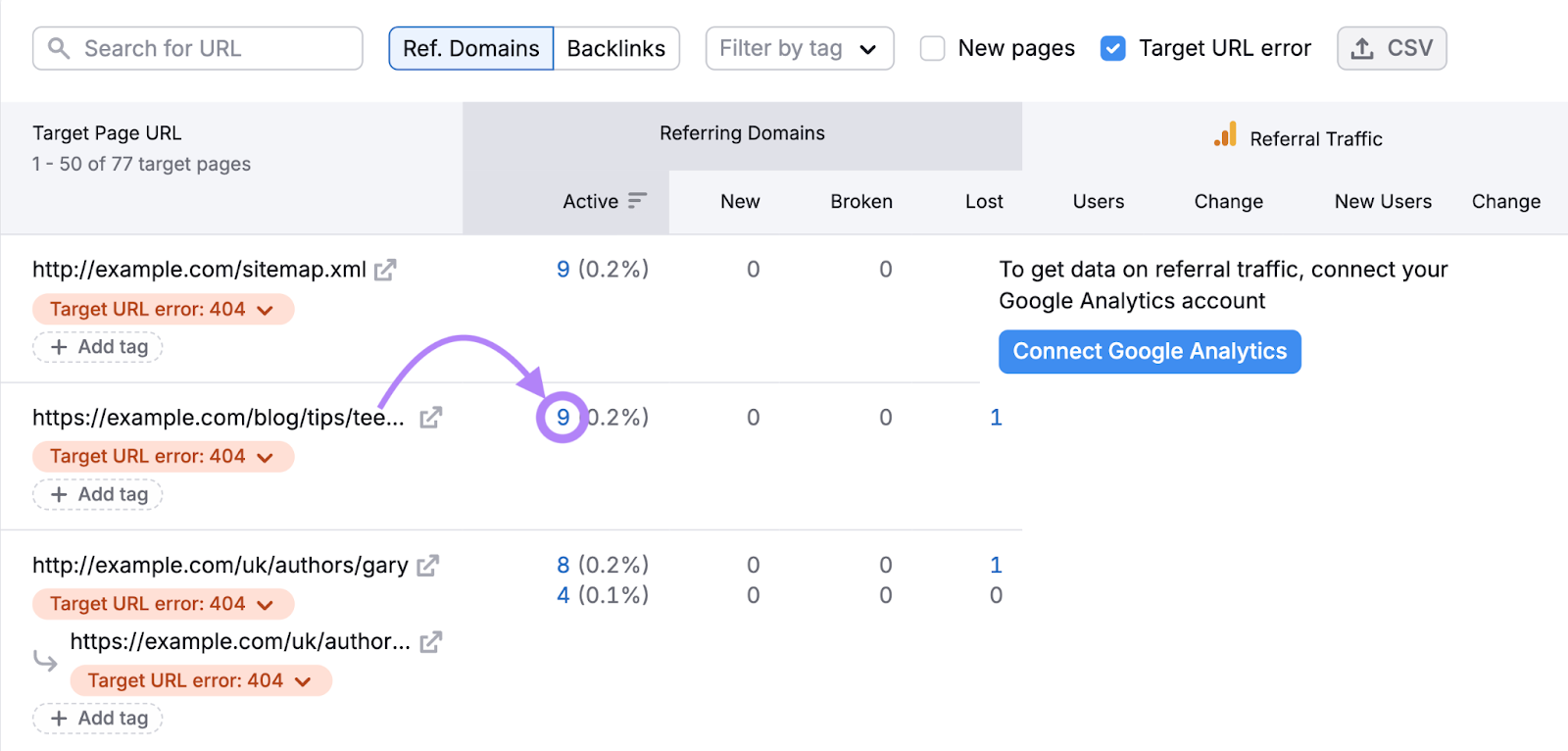
From here, you can learn more about the backlinks. And click through to the source pages.
Judge which backlink opportunities are worth pursuing. Based on:
- The quality of the page: Links from poor-quality pages can do more harm than good. So they may not be worth pursuing.
- The nature of the content: For example, admins are unlikely to update archived content
- The context of the backlink: For example, is your content framed in a positive light?

If an opportunity is worth pursuing, find the email address of a relevant contact.
And send them a concise, friendly message like this:
Subject: Broken link on your page
Hi [Article Writer],
I noticed that your page [URL] contains a broken link to our website.
Could you please update this with a link to [new URL]?
Best,
[Your Email Signature]
Follow up as needed. And keep note of your results for future reference.
Then, repeat until you’ve obtained as many backlinks as possible.
2. Inherit Your Competitors’ Broken Backlinks
It’s possible to inherit competitors’ broken backlinks. By suggesting your link as a replacement.
This works because web admins don’t like linking to broken pages. And you’re offering an easy solution.
To get started, go to Semrush’s Backlink Analytics tool. And analyze a competitor’s domain. (In this case, a competitor is any site that publishes content similar to yours.)

Then, go to the “Indexed Pages” report. And check the box next to “Broken Pages.”
You’ll see a list of pages on your competitor’s site that don’t work properly. Sorted according to the number of domains that link to them.
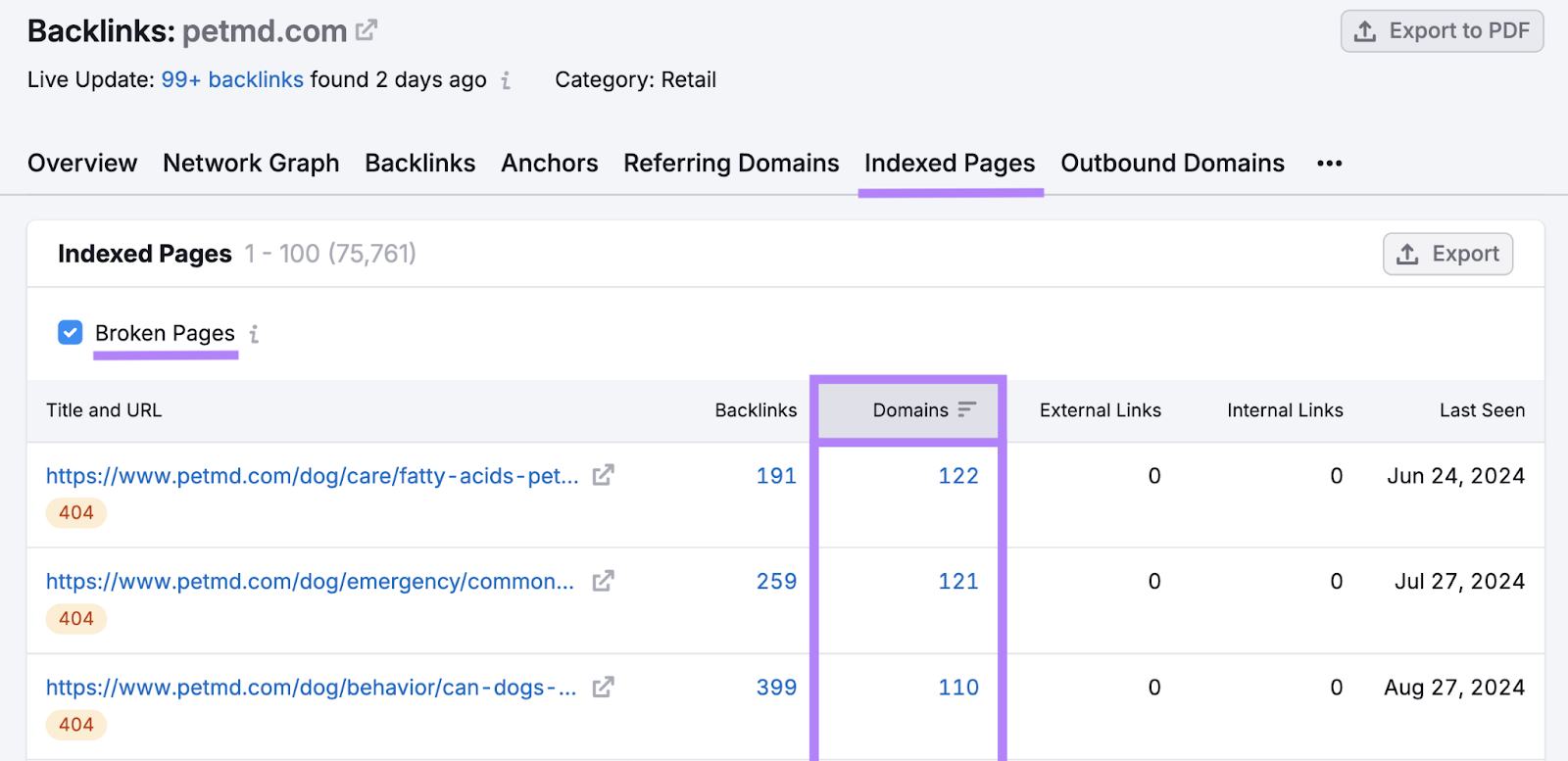
Starting at the top, identify a page that you have a good replacement for. (Or could create a good replacement for.)
Then, click the corresponding link to see a list of the page’s backlinks.

Filter for “Active” and “Follow” links.
Then, judge which backlink opportunities are worth pursuing. Using the tips outlined in the previous section.
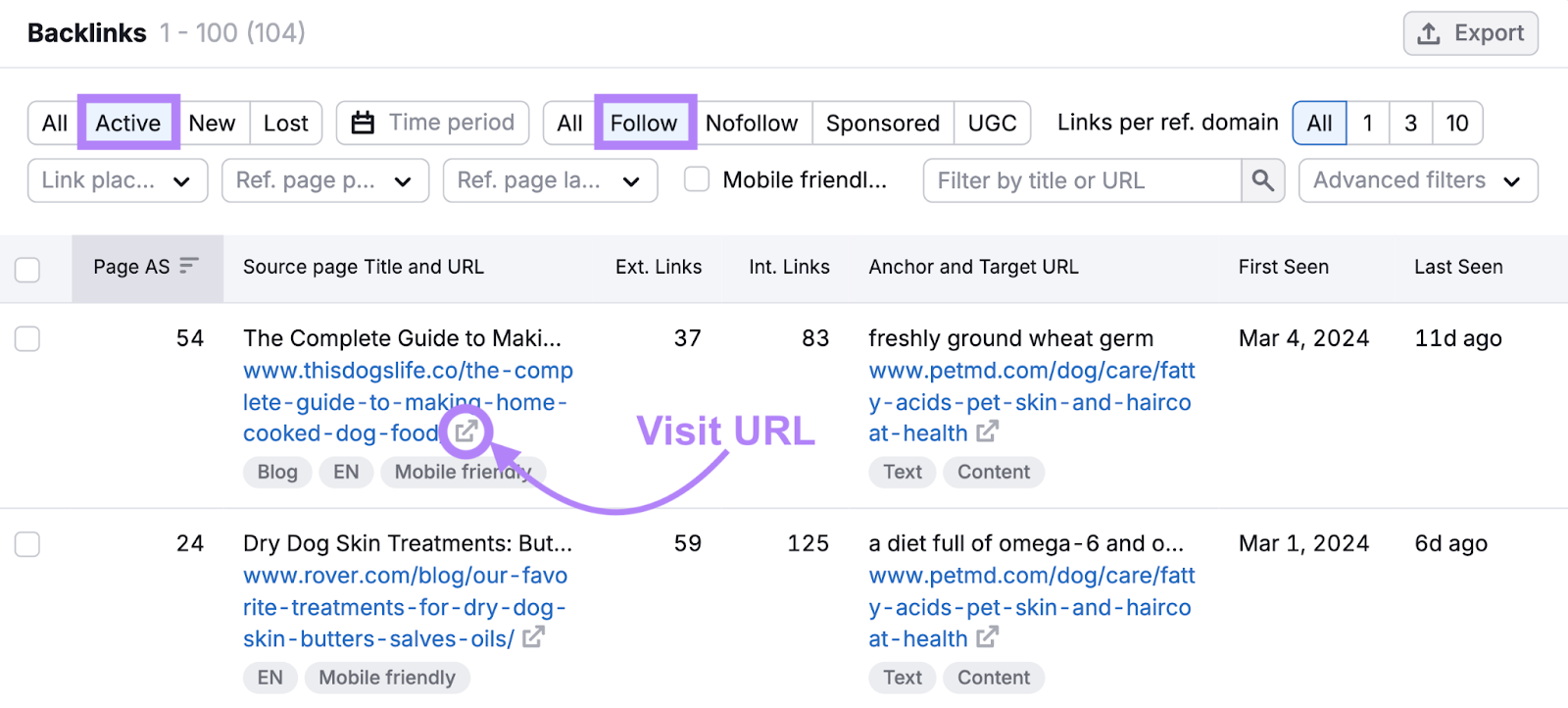
When you email your contact, it’s crucial to explain why your link makes a good replacement.
Here’s a template you can use:
Subject: Broken link on your page
Hi [Name],
I noticed your article [Linked Article Title] contains a broken link on the text “[anchor text].”
If you’re looking for an alternative, we’ve just published [Linked Article Title]. It’s a good fit because [explanation].
Best,
[Your Email Signature]
The power of reciprocity (“you scratch my back and I’ll scratch yours”) means there’s a pretty good chance of the recipient accepting your pitch.
All that’s left is to follow up, keep records, and repeat the process.
3. Respond to Relevant Media Requests
Media requests are formal appeals for quotes, statistics, or other contributions for a piece of content. Typically issued by journalists.
If you provide what the journalist needs, you may get featured in their article. And receive a backlink to your website as attribution.
For example, here are some requests posted on the Featured platform:
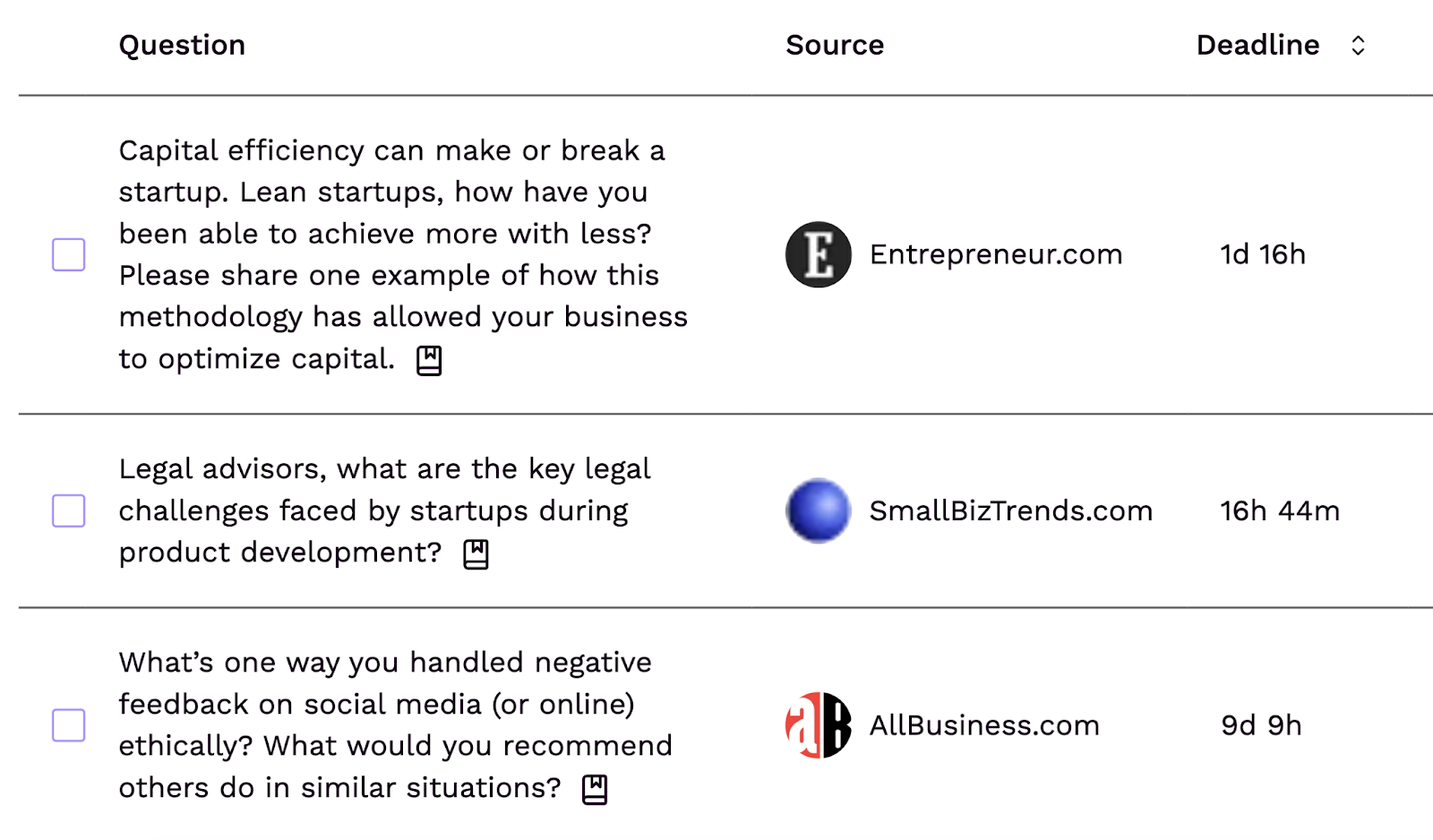
There are many other services that allow users to submit and respond to media requests. Such as Connectively, Qwoted, and ProfNet.
The right one for you depends on your niche, location, etc.
Generally, these are the steps you need to follow:
- Sign up as a source/expert and create a personal profile highlighting your areas of expertise
- Opt in to email alerts about relevant requests and monitor your inbox
- Respond to relevant requests as quickly and strategically as possible
- Follow up if necessary and track the results of your efforts
To maximize the chance of being featured, make sure your responses are relevant, concise, and unique.
To maximize the chance of getting a backlink, ask the journalist to credit you with one. And supply the link you want them to use.
The more relevant the link is to your submission, the better.
4. Get Featured on Resource Pages
A resource page is a curated list of links that directs users to helpful content on a specific topic.
For example, a university website might have a resource page listing links to academic journals, research databases, and educational tools.
If you have a relevant, unique, and high-quality resource to add, the creator might be willing to give you a backlink, too.
To find resource pages in your niche, try these Google searches:
- [keyword] inurl:resources
- [keyword] inurl:links
- [keyword] intitle:resources
- [keyword] intitle:links
For example:
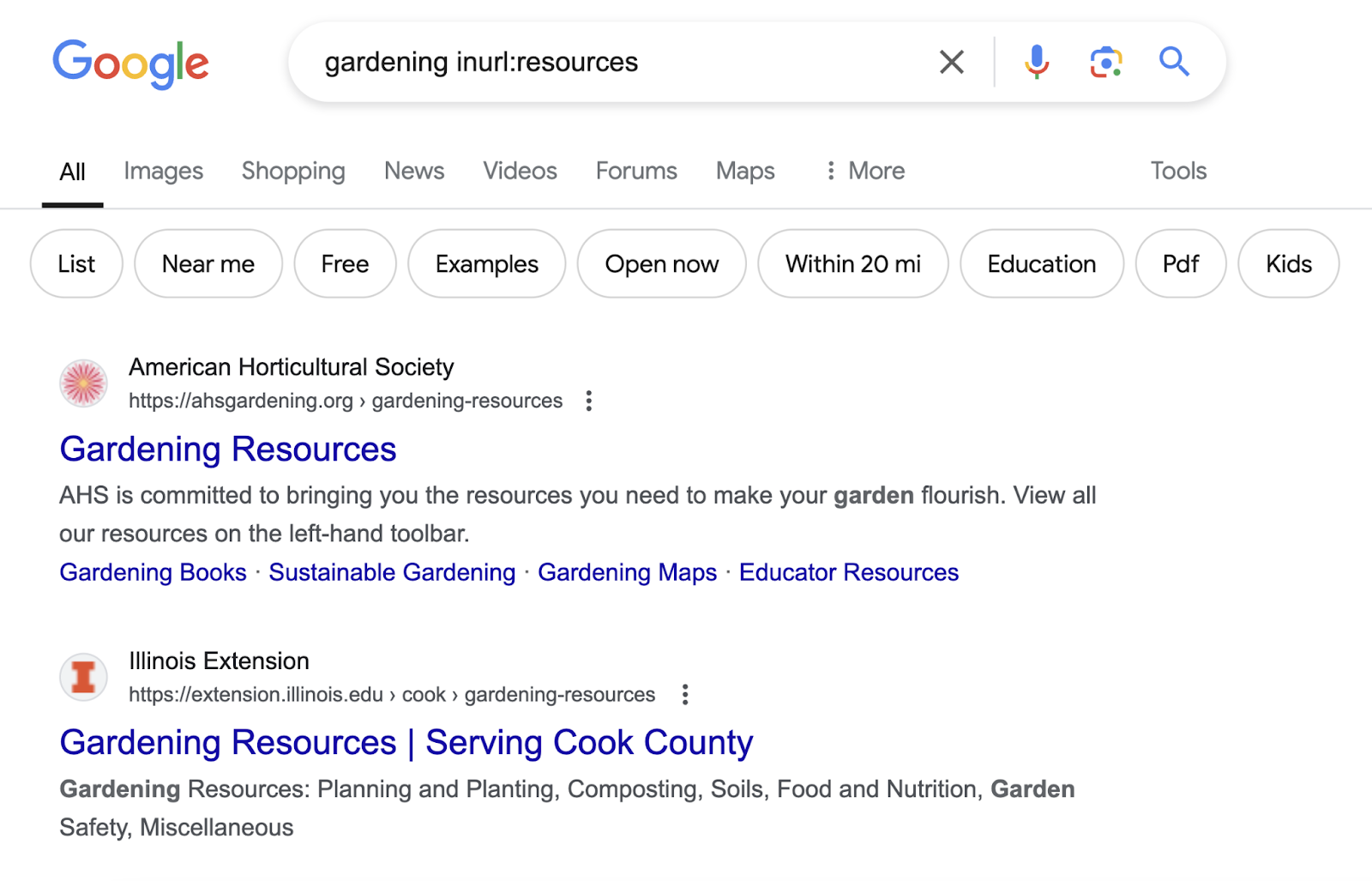
Then, click through to see if your link would make a good addition to the page.
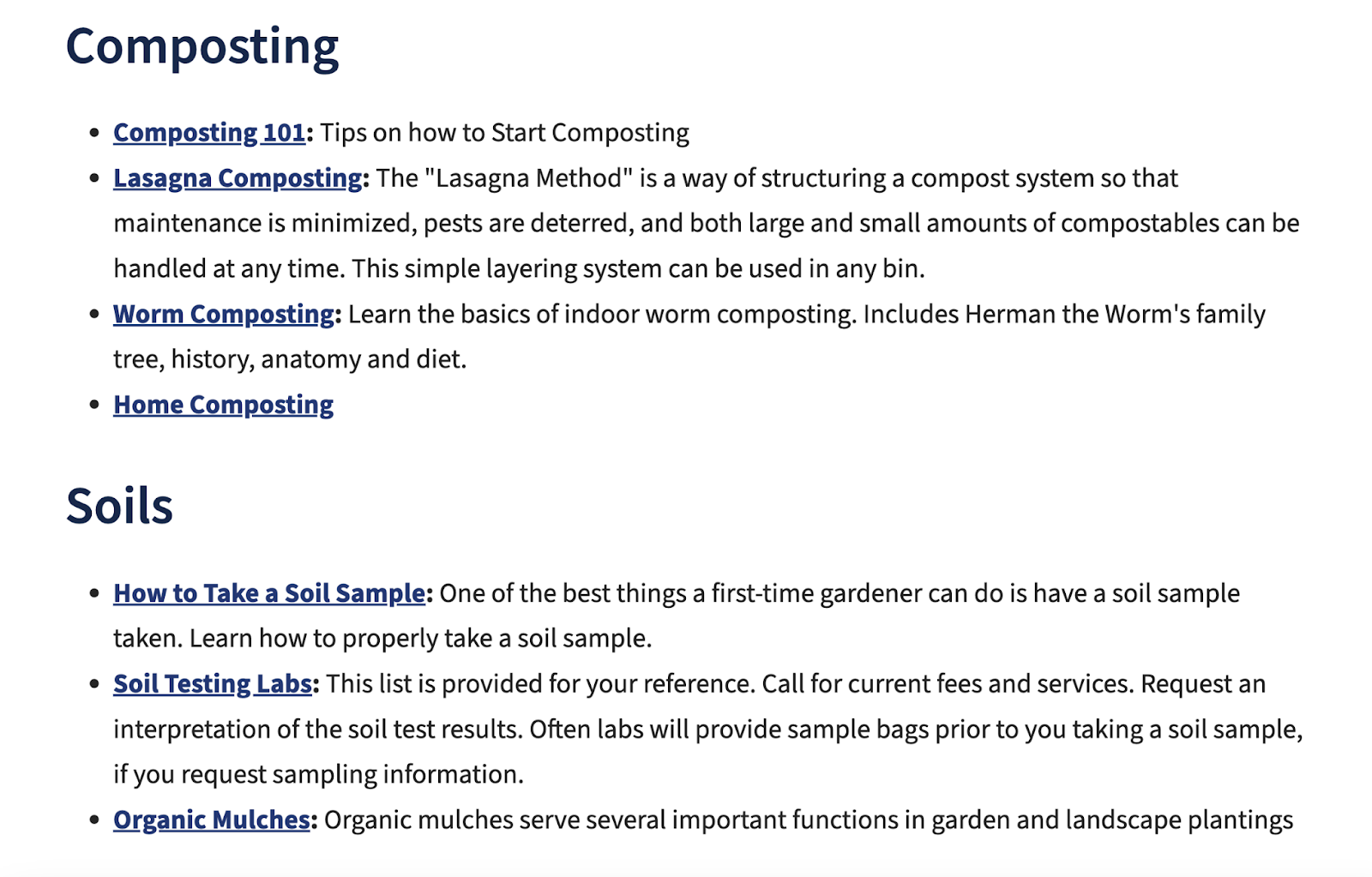
If so, send a short, friendly email to the page owner. Making sure to use a clear subject line. And explain how your link will add value to their resource list.
5. Create Content People Naturally Want to Link To
Creating link-worthy content (known as link bait) allows you to obtain backlinks naturally.
Generally, creators link to pages that add value to their own content. Especially if that page has content that would be difficult to replicate.
Some of the most linkable formats include:
- Expert guides that act as reliable information sources
- Infographics that display data in a compact, visual format
- Data studies that provide interesting statistics for writers to cite
- Free tools that creators can refer their audience to
- Interactive content that provides a unique and engaging experience
- Templates that help target users achieve their goals
- Living resources that creators can rely on to provide up-to-date information
For example, Techradar has a guide to the best VPNs:
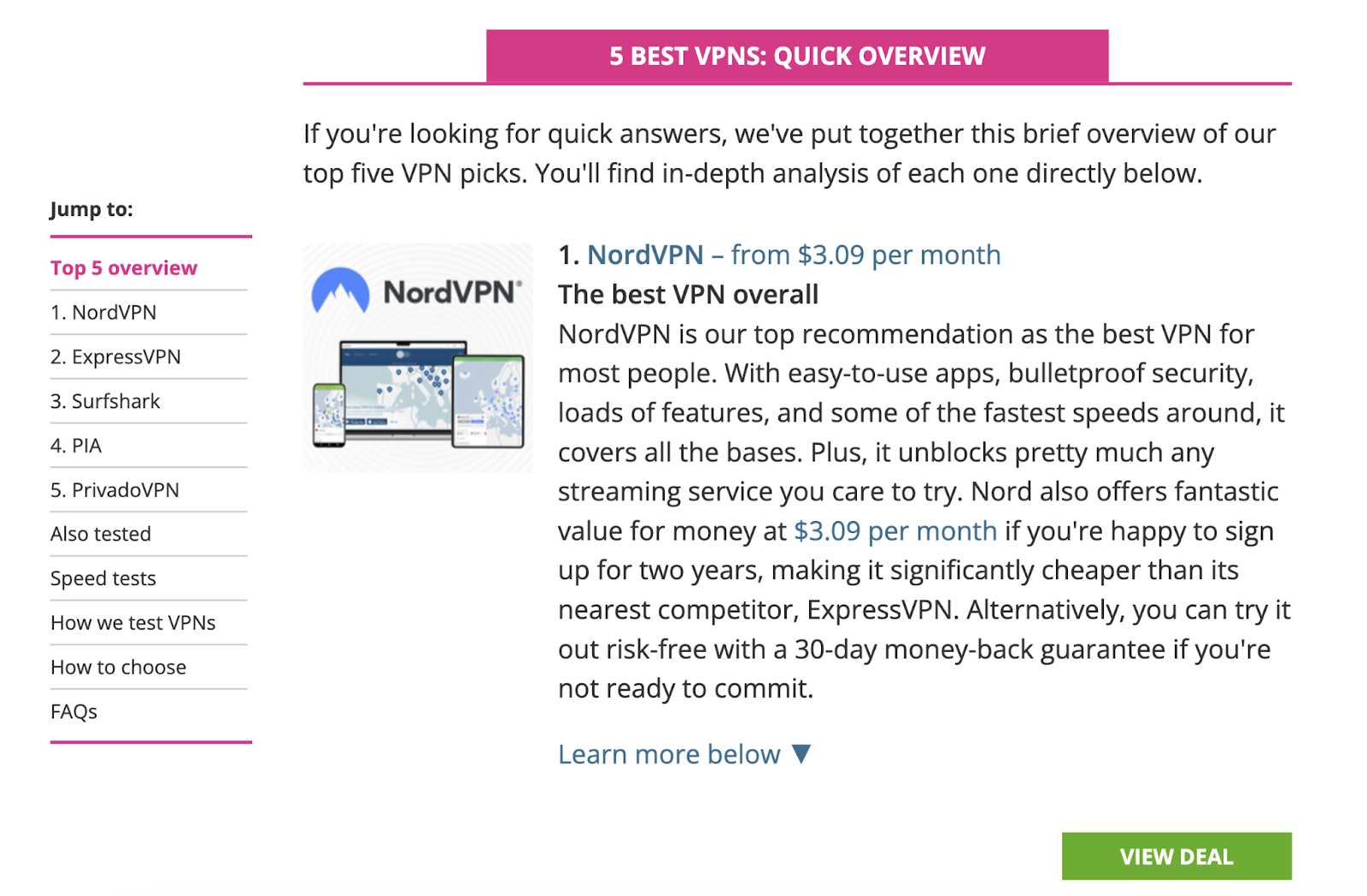
The page is updated regularly and contains in-depth, reliable information.
It’s a great source for creators who want to provide their readers with advice about the best VPNs. But are unable to do so themselves.
Backlink Analytics shows that the page has backlinks from over 2,000 domains:
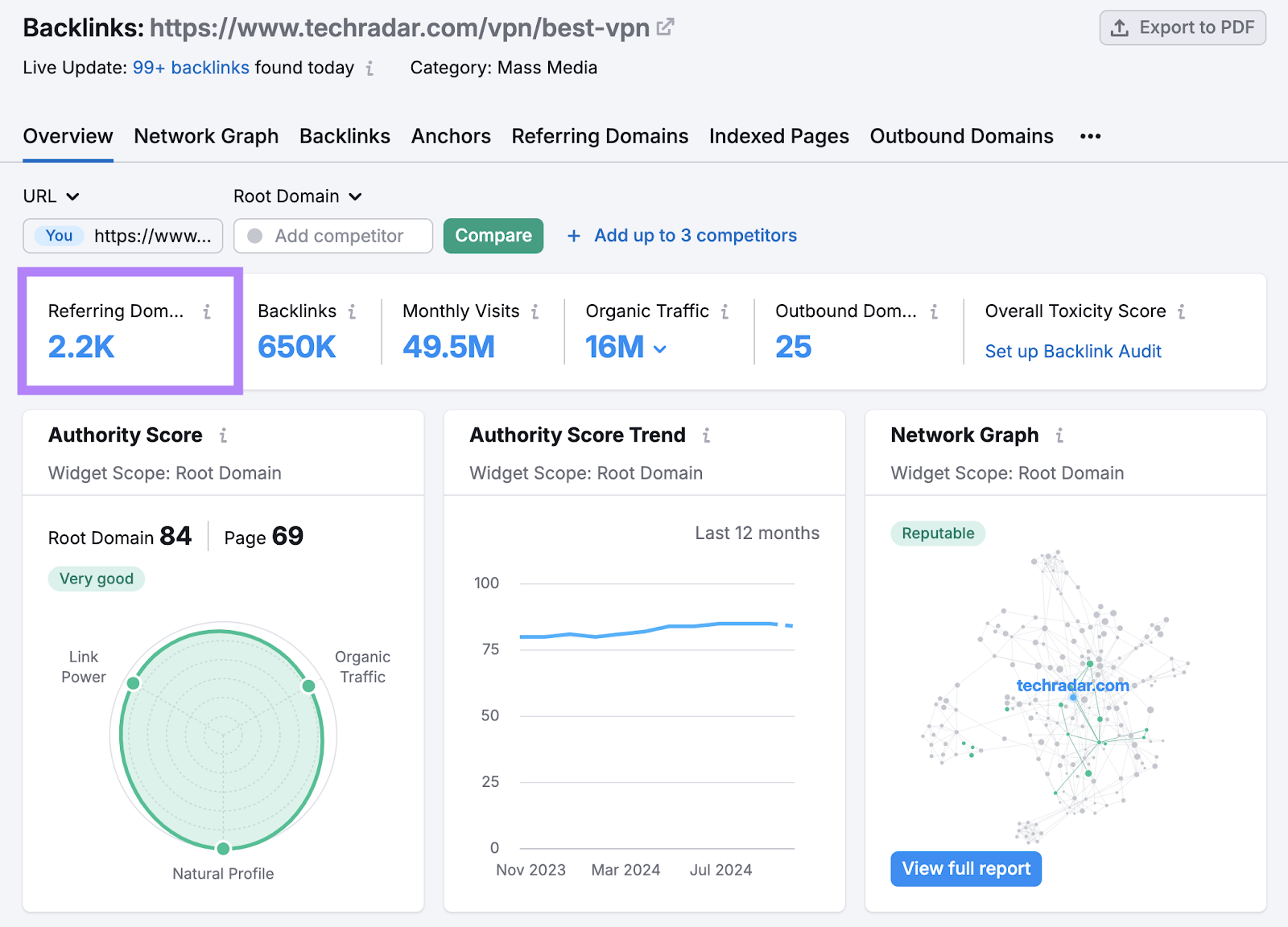
6. Improve on Popular Content (Then Promote It)
Find competitor content that has lots of links, improve upon it, then promote your version.
This is known as the skyscraper technique. And it works because you’re creating content that has proven demand—and giving creators good reason to link to your version.
Here’s exactly how to create backlinks this way:
Go to Semrush’s Backlink Analytics tool and analyze a domain that produces content in your niche. This could be a commercial competitor, an industry blog, etc.

Go to the “Indexed Pages” report to see which pages on the site have backlinks from the most domains.
(Generally, the number of referring domains is more important than the number of backlinks. Because additional links from the same site carry less value.)
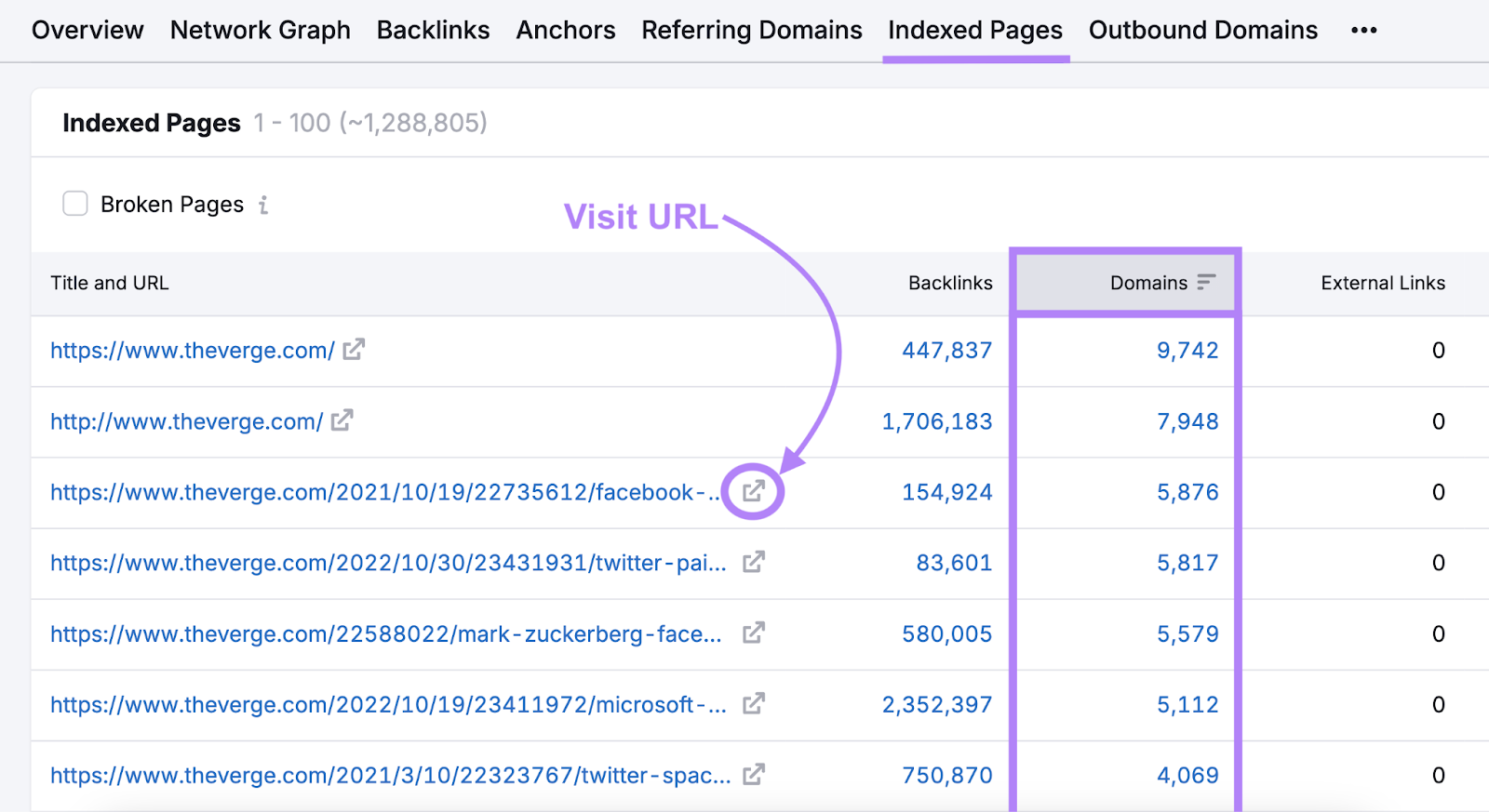
Review the source pages to find content that:
- You could improve upon: There needs to be room for you to add value. For example, could you make the content more comprehensive, visually appealing, or interactive?
- Fits your brand: You shouldn’t create content purely for link-building purposes. It’s important that the content makes sense for your brand. And supports other marketing goals.
Then, look at the content’s backlink data to see if it gets the kinds of backlinks you want to acquire or replicate.
If so, you’ve found a good candidate for the skyscraper technique.
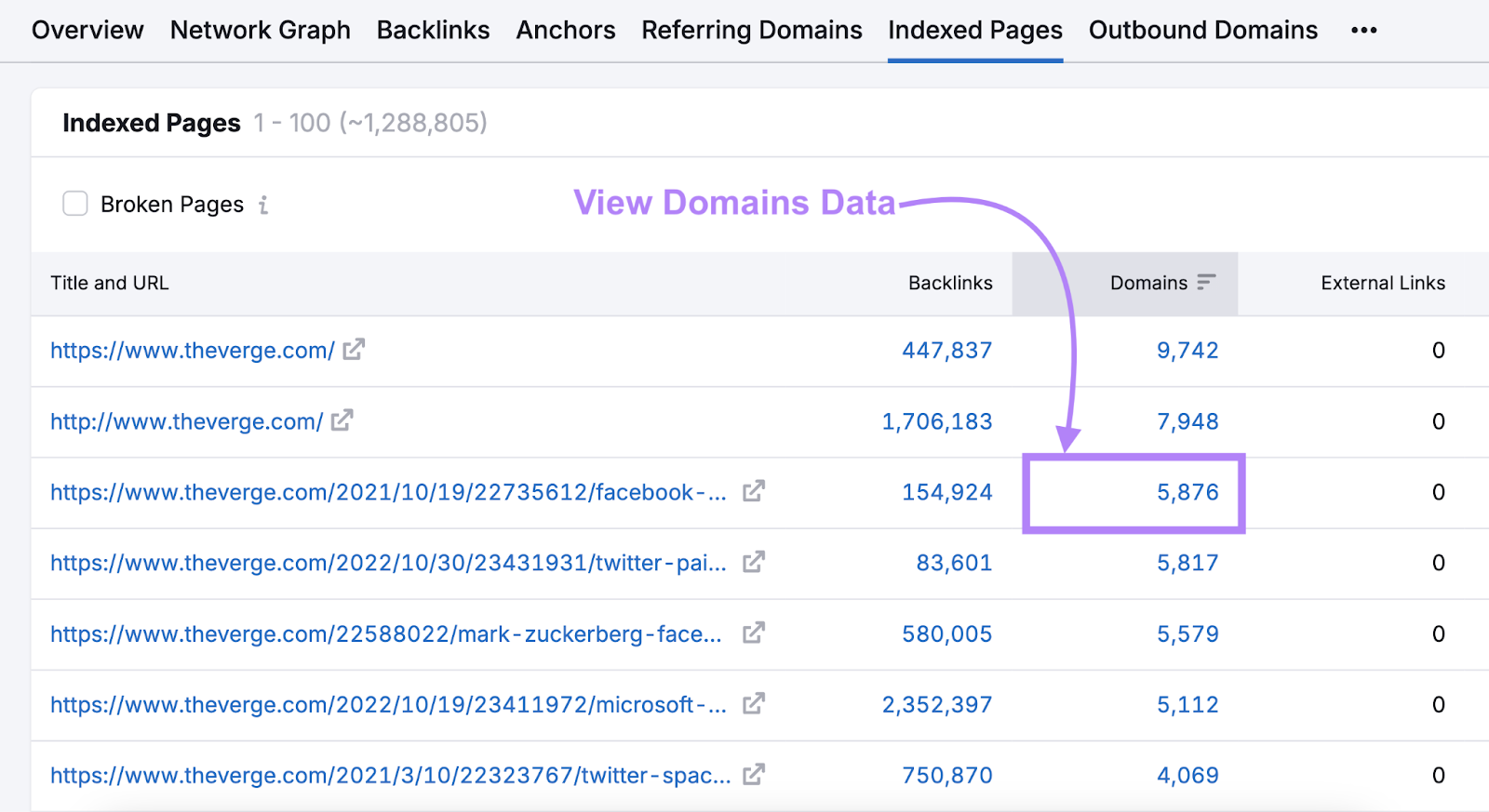
After publishing your skyscraper content, consider reaching out to the sites that link to your competitor’s resource. To explain why they should link to your version instead.
Send outreach emails to other sites that might be interested, too. Using Semrush’s Link Building Tool.
It identifies link building prospects based on your target keywords and competitors.
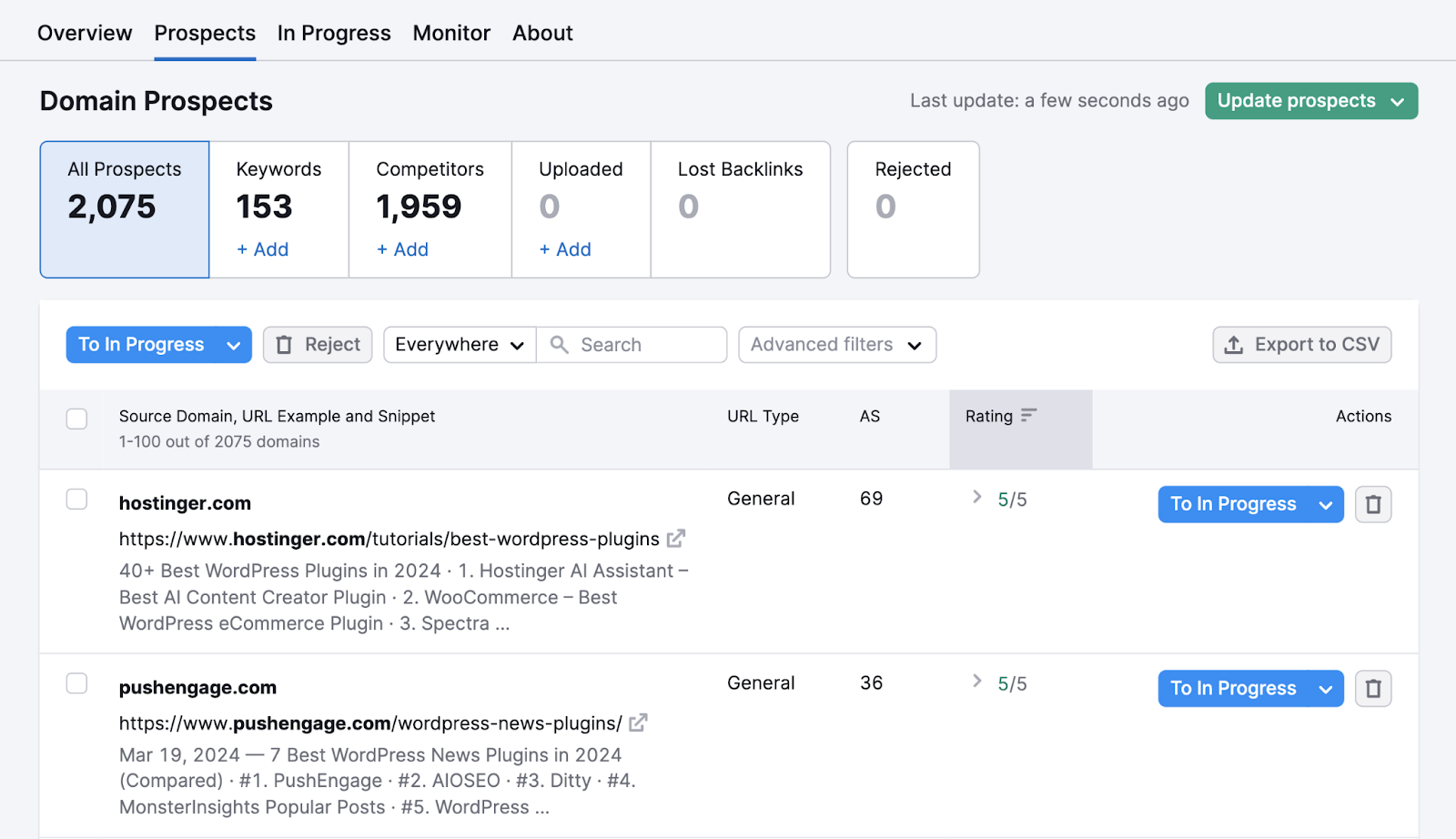
And helps you send and track your outreach emails.
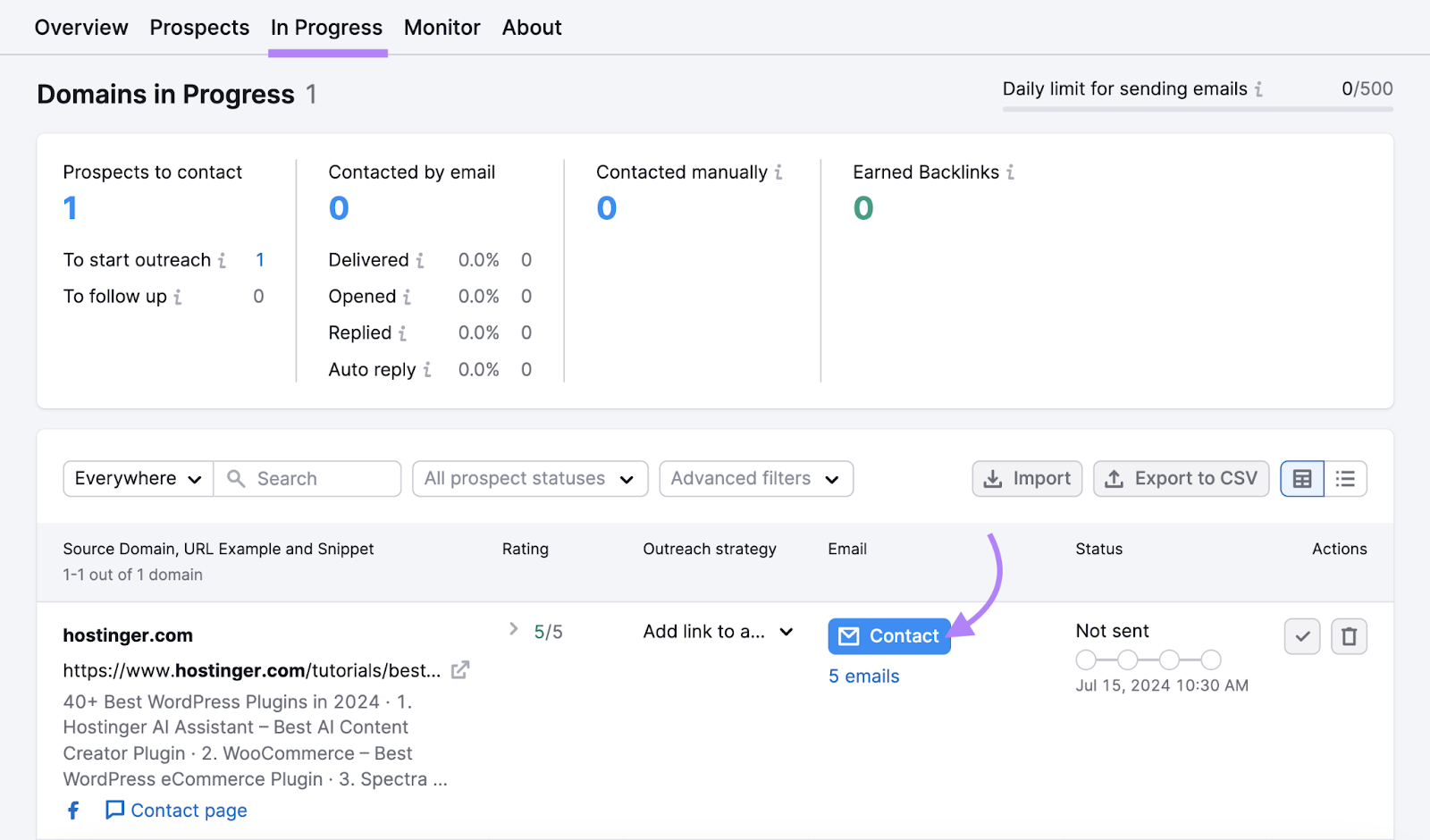
7. Turn Unlinked Brand Mentions into Backlinks
Unlinked brand mentions occur when someone references your brand in their content but doesn’t include a link to your website.
You can turn mentions into backlinks with the help of the Brand Monitoring app.
After signing up, create a query for your brand name. And make sure to include your domain in the “Track backlinks” section.
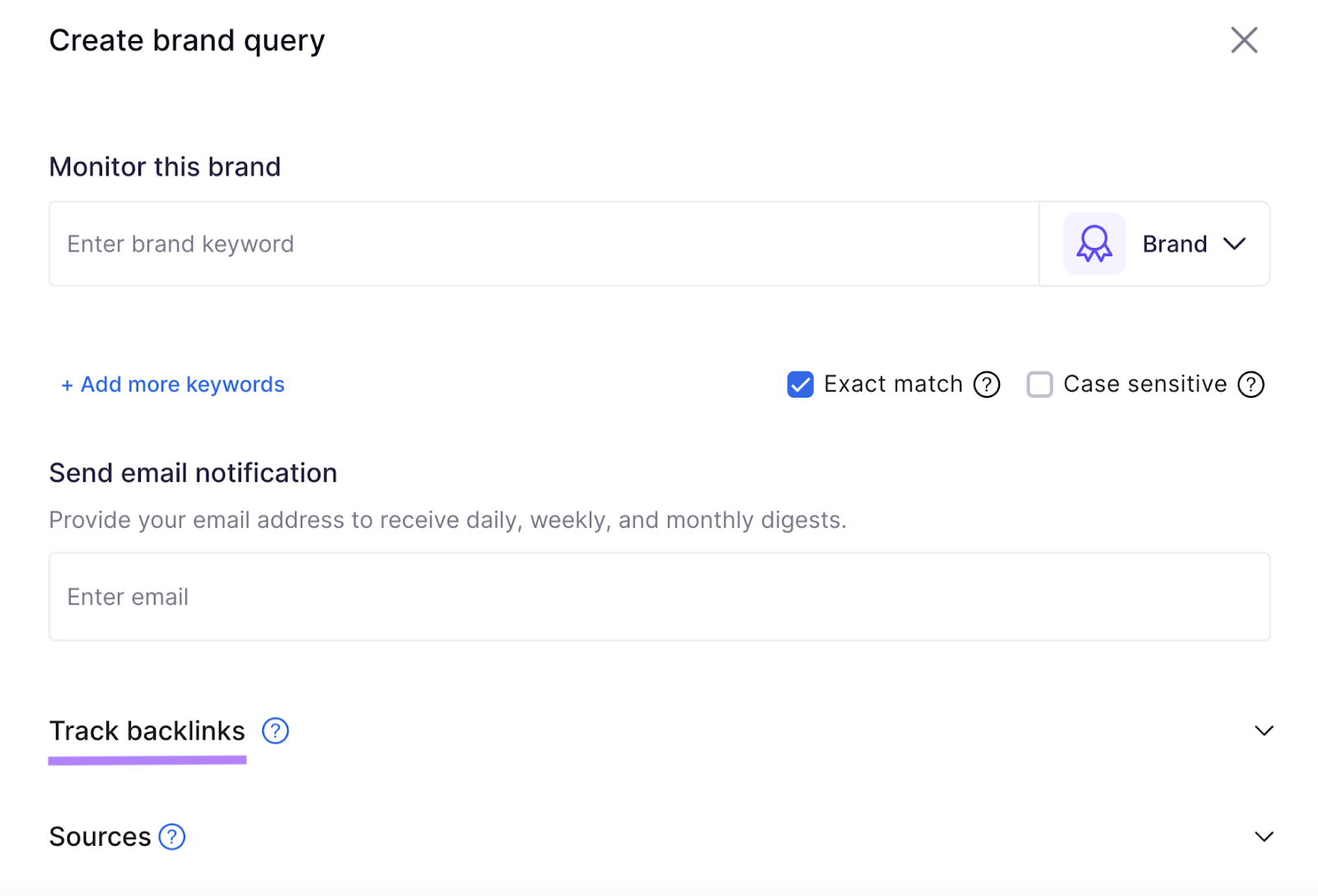
Next, go to the “Mentions” report and apply the following filters:
- “Sentiment” > “Neutral,” “Positive,” and “Unknown” (It may be unwise to contact sites that have talked about your brand negatively.)
- “Mention details” > “Backlinks” > “Without backlinks”
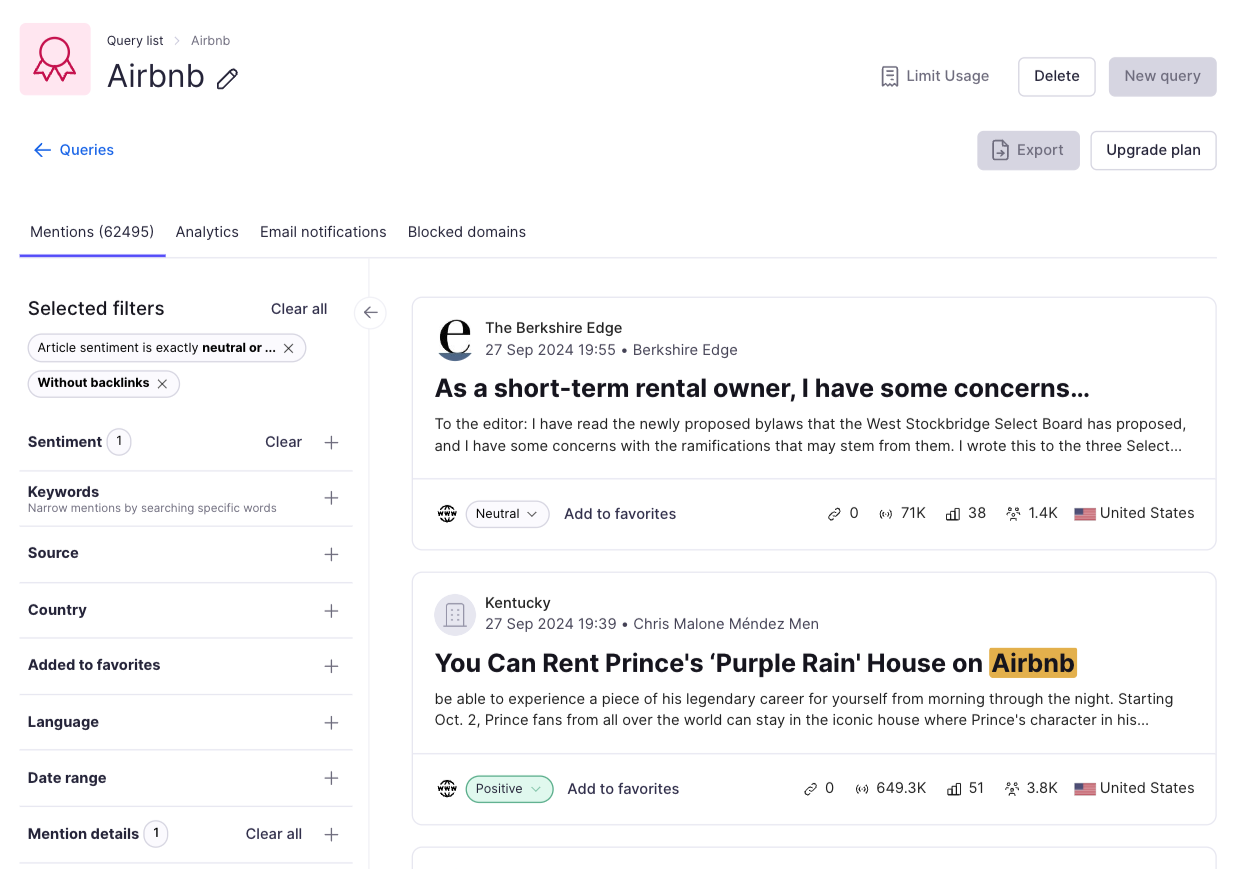
Now you have a list of unlinked brand mentions.
Find instances where it would make sense for the creator to add a link. And where the backlink would most likely benefit your business.
Then, it’s just a matter of sending the right email to the right person.
Make sure to:
- Thank the creator for mentioning your brand
- Describe exactly where the link should go and where it should point to
- Explain why your link will add value for their readers
This can help you gain backlinks that are highly relevant and natural.
8. Replicate Your Competitors’ Backlinks
Competitors may have backlinks you can replicate.
For example, your rival might have a quality backlink because their CEO gave an interview to an industry publication. And you might be able to arrange an interview with the same site.
Or perhaps your rival is listed in an industry round-up that could include your brand, too.
Building backlinks in this way allows you to close competitive gaps. Plus, it has a pretty high success rate. Because you’re using proven techniques.
To get started, go to the Backlink Gap tool.
Enter your own domain and up to four competitors’ domains. Then, click “Find prospects.”
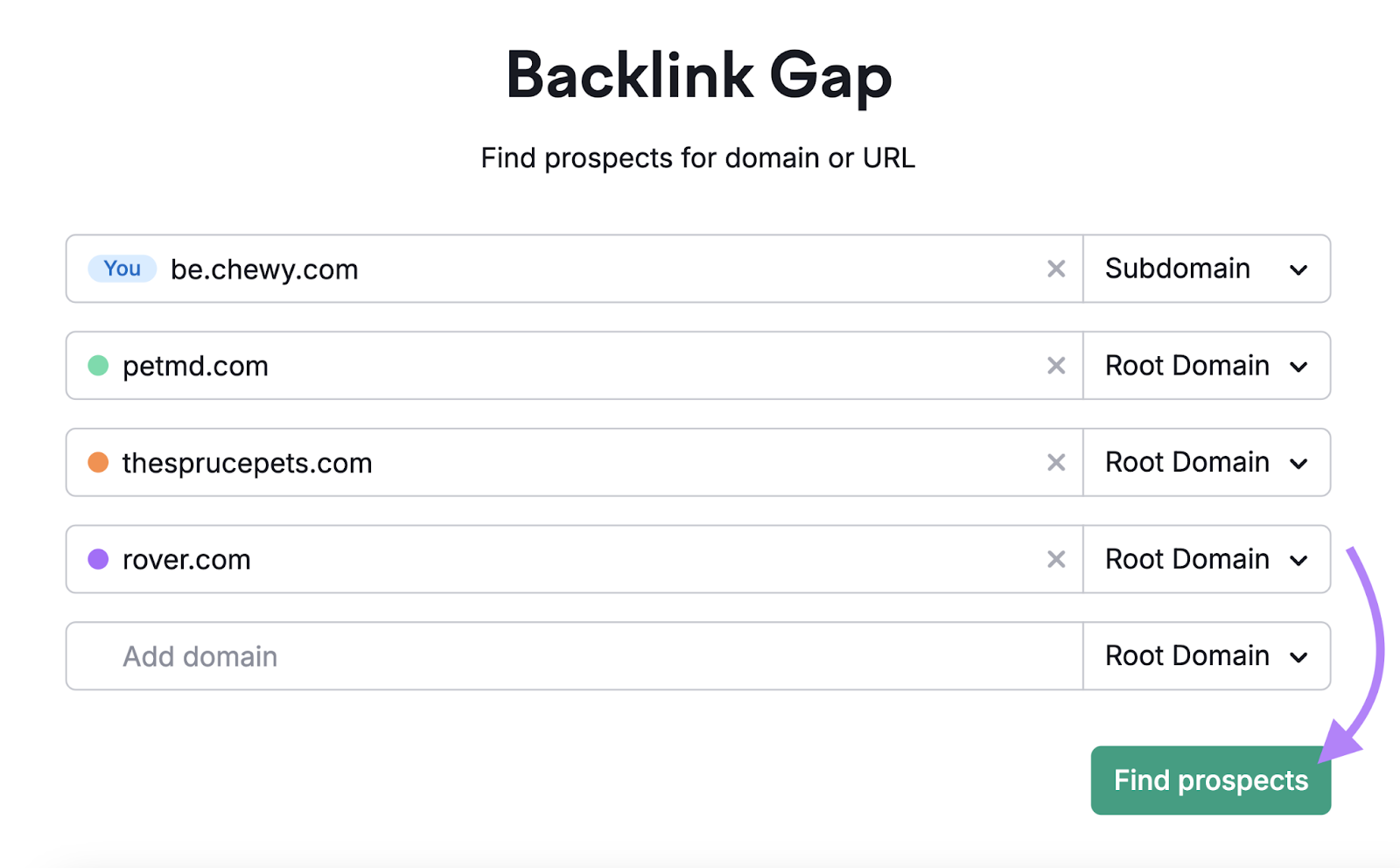
The tool will present sites that link to at least one competitor but not to you.
Along with the following data:
- AS: The Authority Score (AS) of the referring domain. Generally, backlinks from higher-AS sites are more valuable for SEO.
- Monthly Visits: The estimated number of monthly visits to the referring domain. The higher the number, the larger your prospective backlink’s potential reach.
- Matches: The number of analyzed competitors that have backlinks on this domain. The more competitors a site links to, the more likely it is to link to you, too.
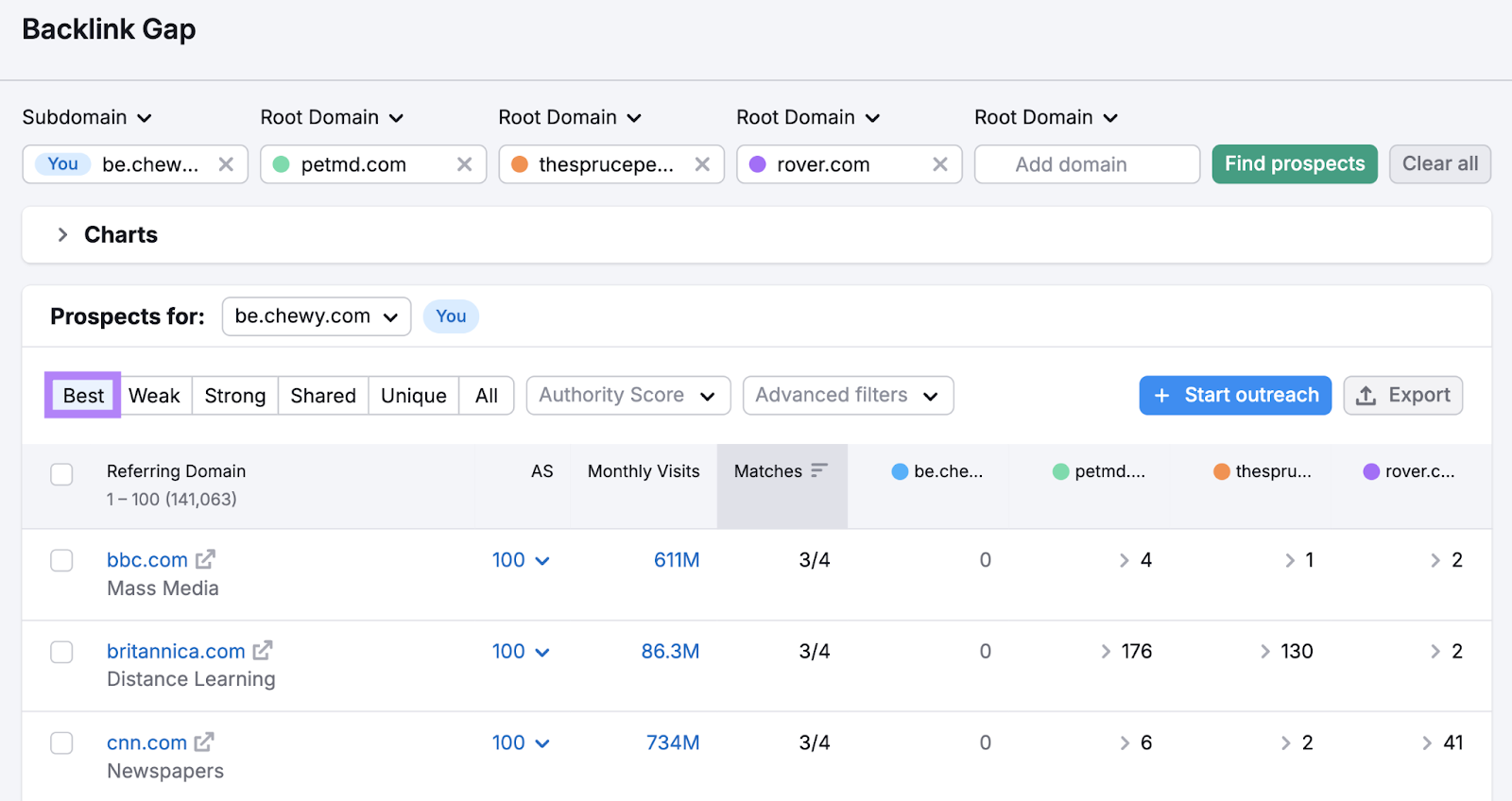
You can see details about your competitors’ backlinks by clicking the arrows in the corresponding columns.
Click through to the source pages to find backlinks that you may be able to—and want to—replicate.

Then, it’s a case of contacting the site with your pitch.
As always, you need to personalize your email, make a clear proposal, and explain what’s in it for the recipient.
9. Leverage Your Existing Partnerships
If you already have professional relationships with organizations or influencers in your niche, use them to get backlinks.
Here’s how to get backlinks for your website this way:
- Provide testimonials for your suppliers
- Ask member associations to include your business in their listings
- Get your linked logo featured on partner websites (e.g., in an “Our clients” section)
- Create co-marketing campaigns around newsworthy events (e.g., product collaborations)
If you’re not sure where to start, create a list of your business partners, suppliers, etc. Then, look at their website for linking opportunities.
The best way to approach your backlink request depends on your relationship with the organization.
Just make sure that you don’t suggest a “you link to me and I’ll link to you” agreement. This form of reciprocal linking is against Google’s spam guidelines.
10. Try to Recover Your Lost Backlinks
It’s possible to lose backlinks when websites update, move, or delete their content.
But it’s also possible to get them back.
After setting up your project on the Backlink Audit tool, go to the “Lost & Found” report.
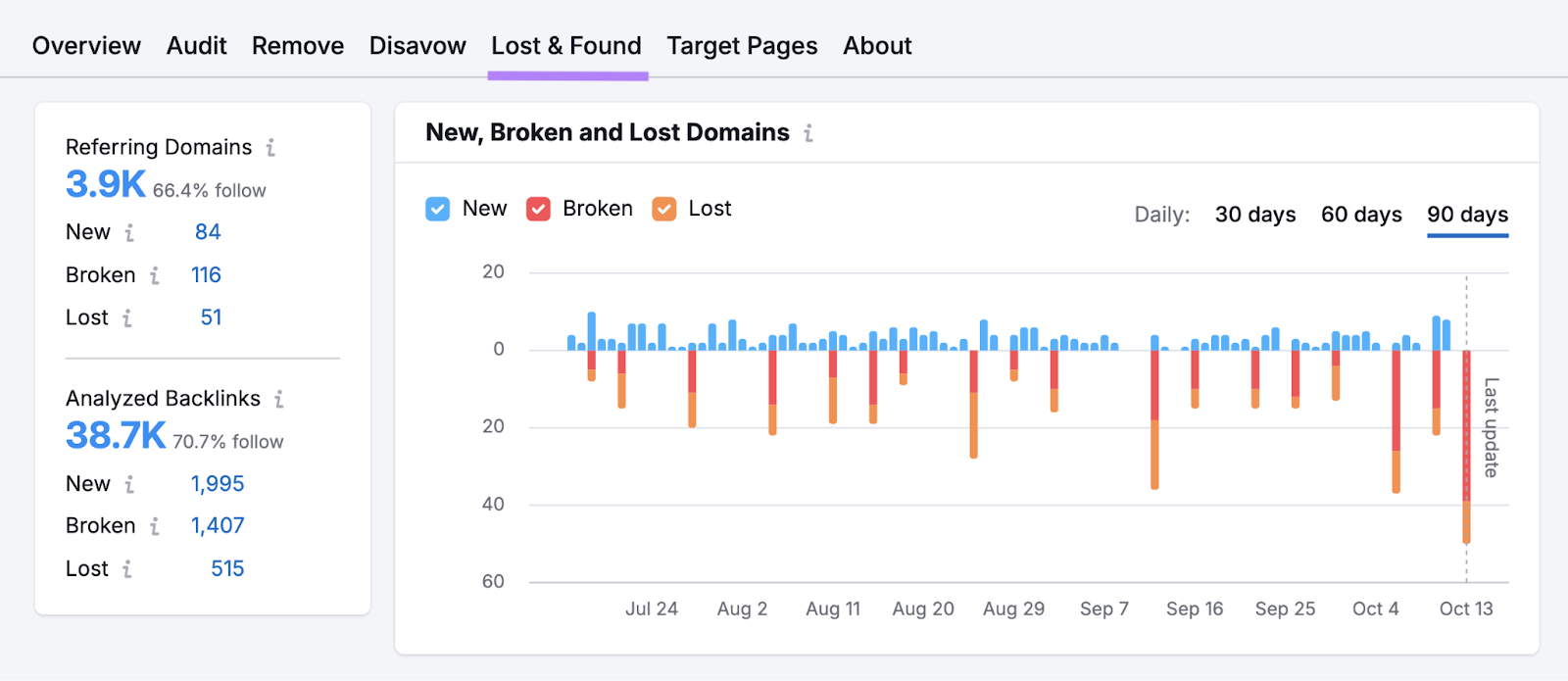
Then, scroll down to the table and apply the “Lost” filter.
You’ll see domains you lost backlinks from during the date range at the top.
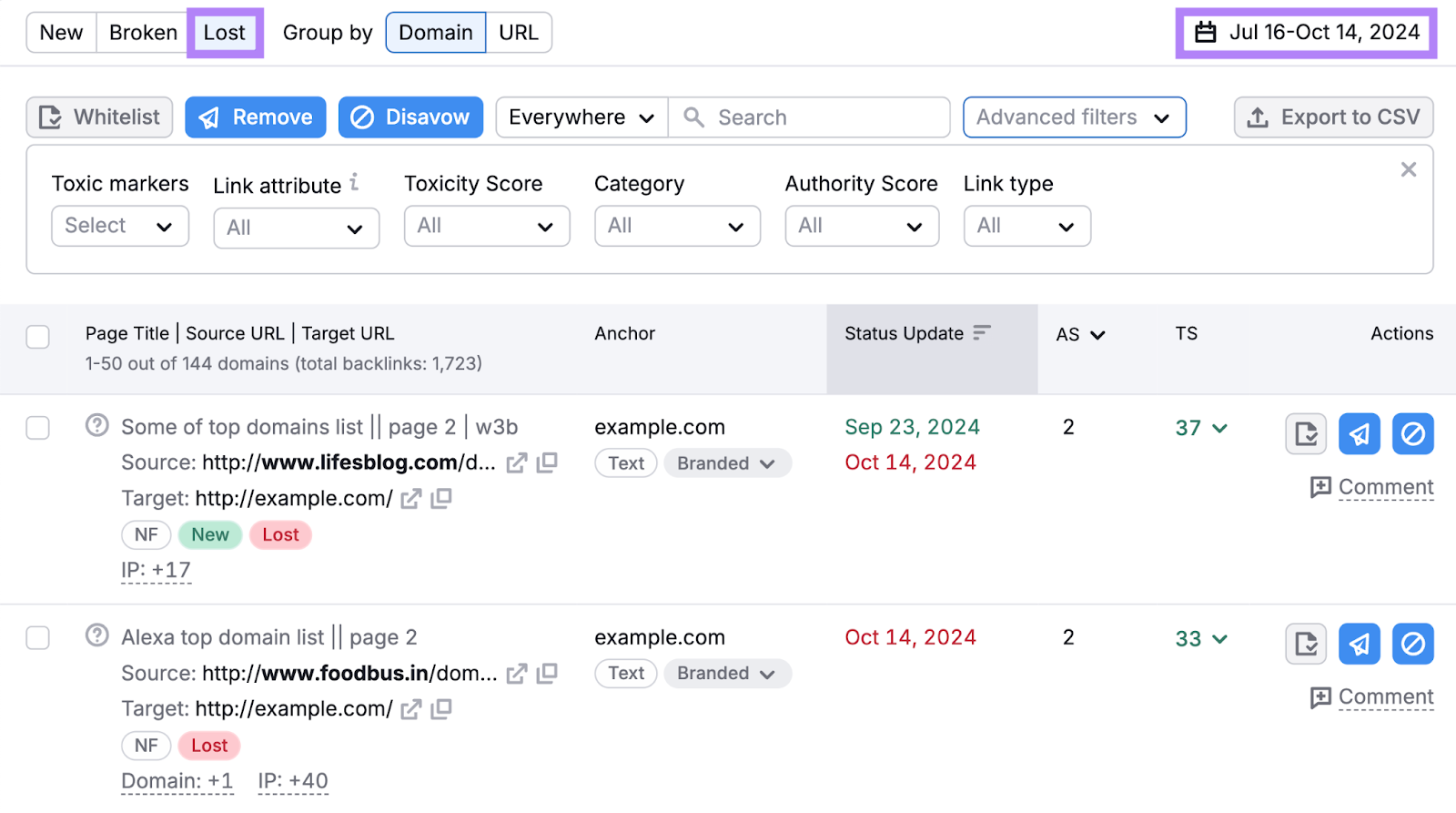
Now, decide which backlinks you want to recover (if any.)
Take into account:
- The domain’s toxicity score (TS): Take extra care before contacting sites in the 45-59 range and avoid sites in the 60-100 range. Toxic backlinks can do more harm than good for your site.
- The potential value of the backlink: If you lose a backlink from a low-authority, low-quality, or low-relevancy page, it might not be worth recovering.
- The likelihood of recovery: This depends largely on the reason for the link loss and your relationship with the website.
If you proceed with outreach, explain where and why the link should be reinstated.
Streamline the Backlink Building Process
No matter how you get backlinks for your website, Semrush’s Link Building Tool can help you streamline the process.
It allows you to:
- Find email addresses for suggested or imported prospects
- Create and use email templates for different backlink building methods
- Track whether your outreach emails have been delivered, opened, or replied to
- Monitor the status of the backlinks you generate
Create your free Semrush account to try this tool and many others.
